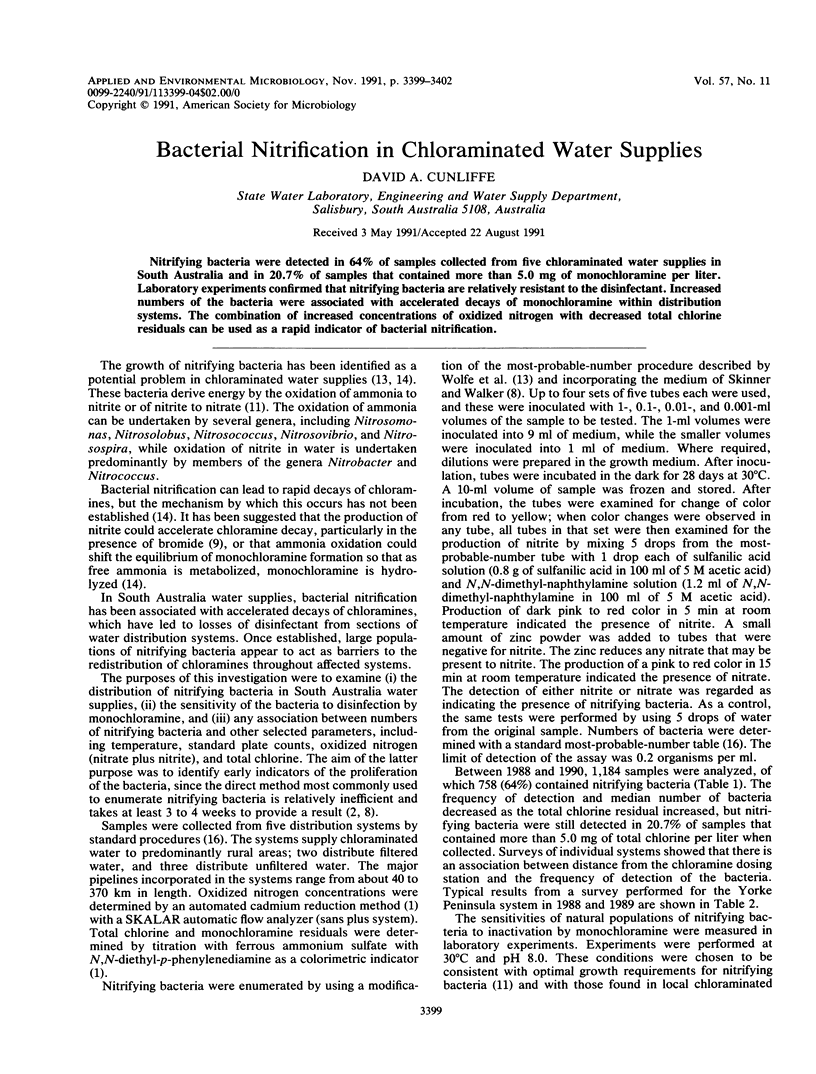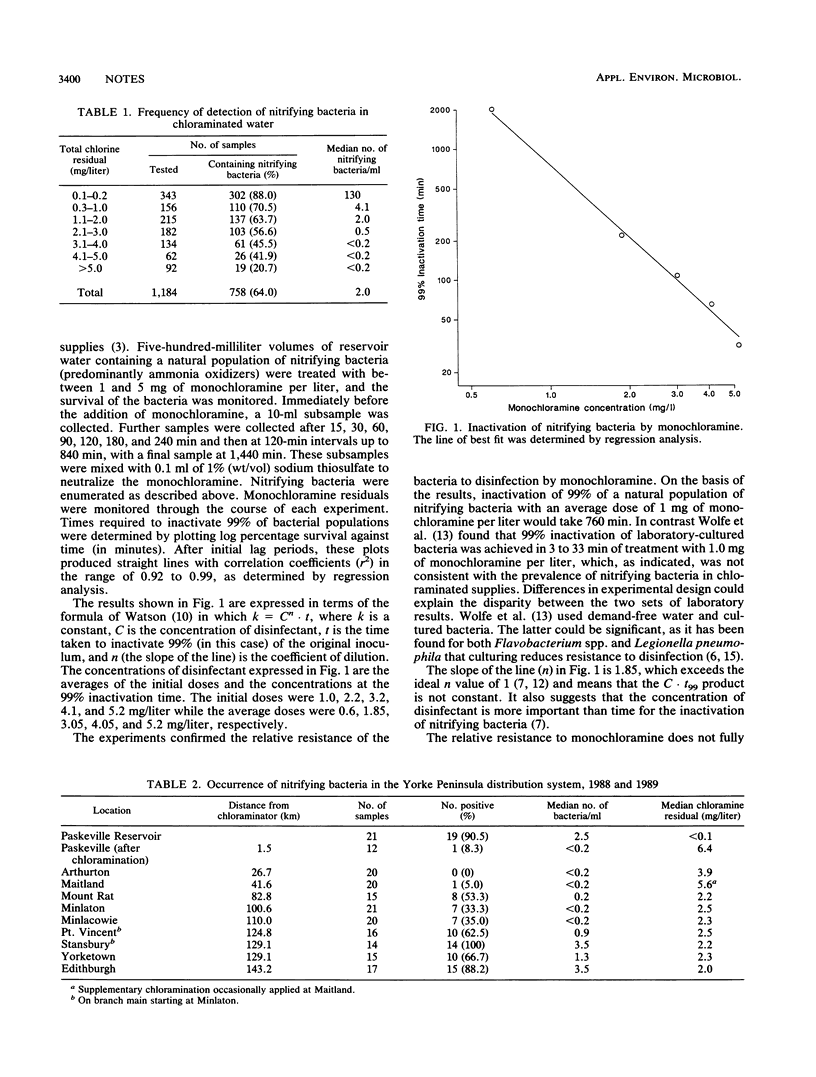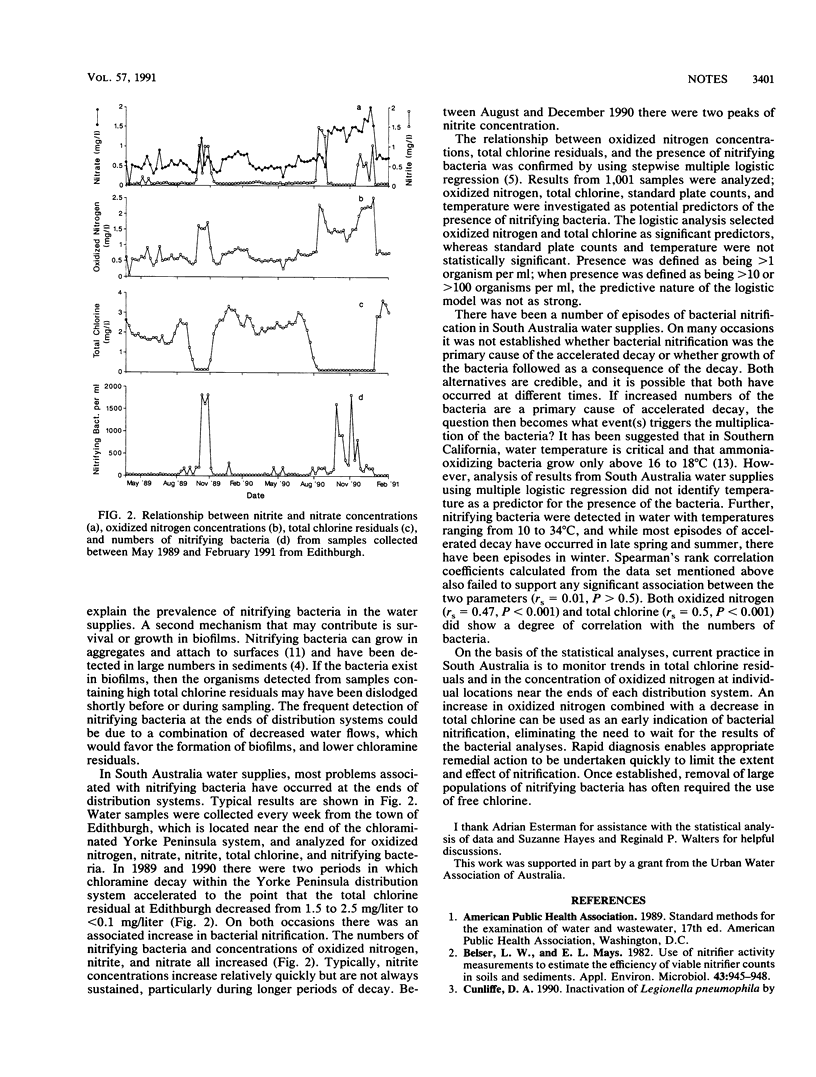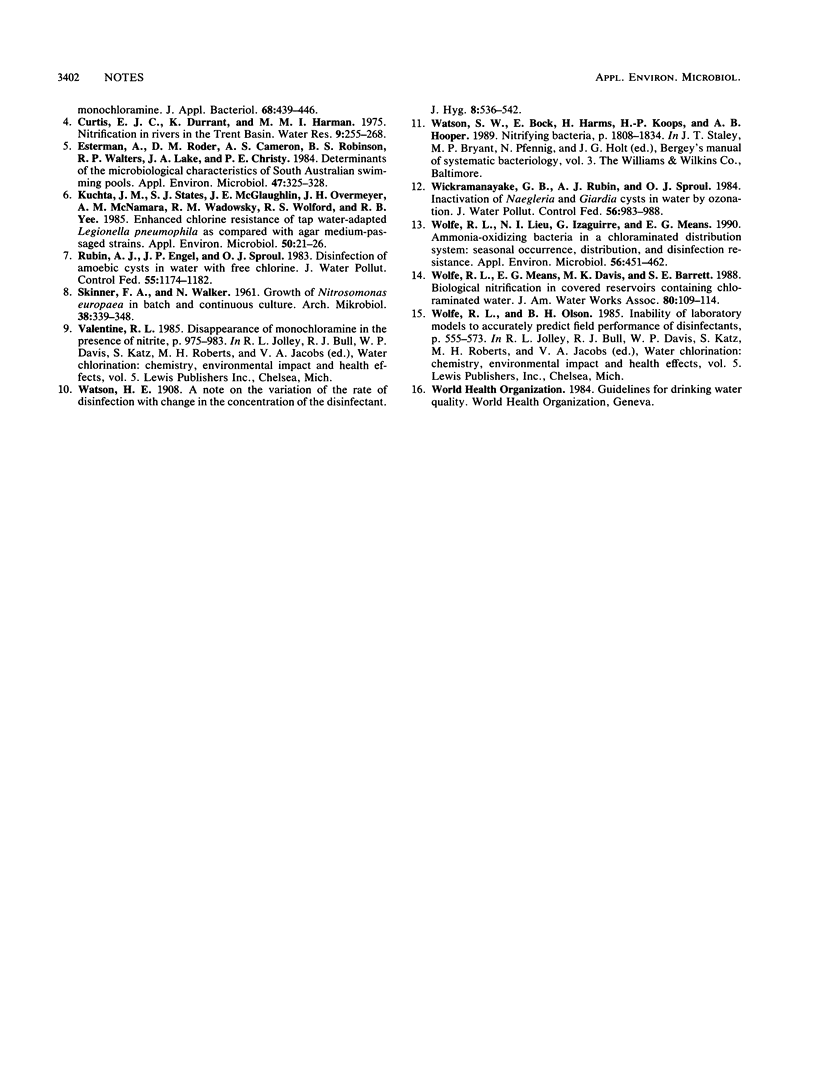Abstract
Nitrifying bacteria were detected in 64% of samples collected from five chloraminated water supplies in South Australia and in 20.7% of samples that contained more than 5.0 mg of monochloramine per liter. Laboratory experiments confirmed that nitrifying bacteria are relatively resistant to the disinfectant. Increased numbers of the bacteria were associated with accelerated decays of monochloramine within distribution systems. The combination of increased concentrations of oxidized nitrogen with decreased total chlorine residuals can be used as a rapid indicator of bacterial nitrification.
Full text
PDF



Selected References
These references are in PubMed. This may not be the complete list of references from this article.
- Belser L. W., Mays E. L. Use of nitrifier activity measurements to estimate the efficiency of viable nitrifier counts in soils and sediments. Appl Environ Microbiol. 1982 Apr;43(4):945–948. doi: 10.1128/aem.43.4.945-948.1982. [DOI] [PMC free article] [PubMed] [Google Scholar]
- Esterman A., Roder D. M., Cameron A. S., Robinson B. S., Walters R. P., Lake J. A., Christy P. E. Determinants of the microbiological characteristics of South Australian swimming pools. Appl Environ Microbiol. 1984 Feb;47(2):325–328. doi: 10.1128/aem.47.2.325-328.1984. [DOI] [PMC free article] [PubMed] [Google Scholar]
- Kuchta J. M., States S. J., McGlaughlin J. E., Overmeyer J. H., Wadowsky R. M., McNamara A. M., Wolford R. S., Yee R. B. Enhanced chlorine resistance of tap water-adapted Legionella pneumophila as compared with agar medium-passaged strains. Appl Environ Microbiol. 1985 Jul;50(1):21–26. doi: 10.1128/aem.50.1.21-26.1985. [DOI] [PMC free article] [PubMed] [Google Scholar]
- Wolfe R. L., Lieu N. I., Izaguirre G., Means E. G. Ammonia-oxidizing bacteria in a chloraminated distribution system: seasonal occurrence, distribution and disinfection resistance. Appl Environ Microbiol. 1990 Feb;56(2):451–462. doi: 10.1128/aem.56.2.451-462.1990. [DOI] [PMC free article] [PubMed] [Google Scholar]


